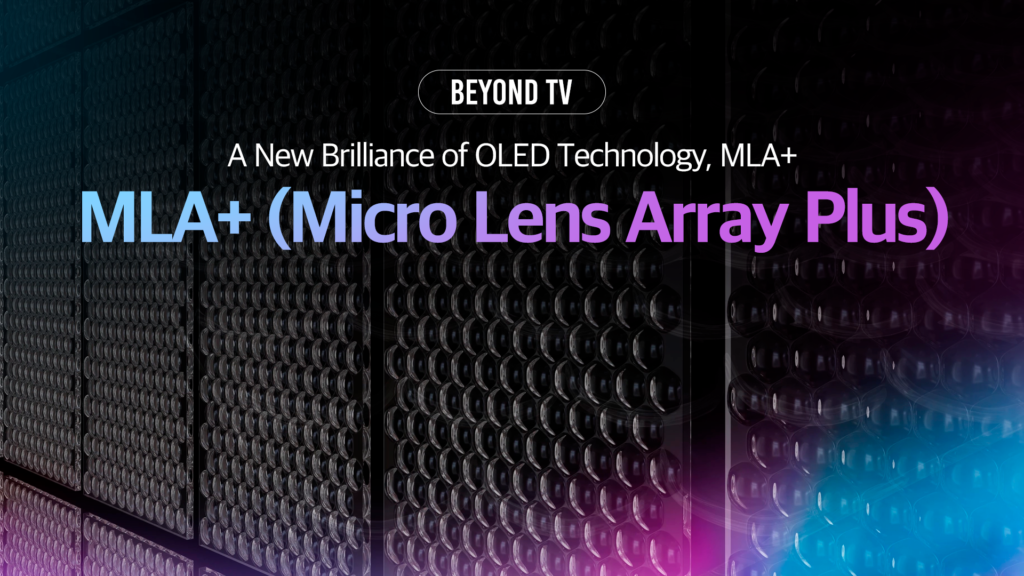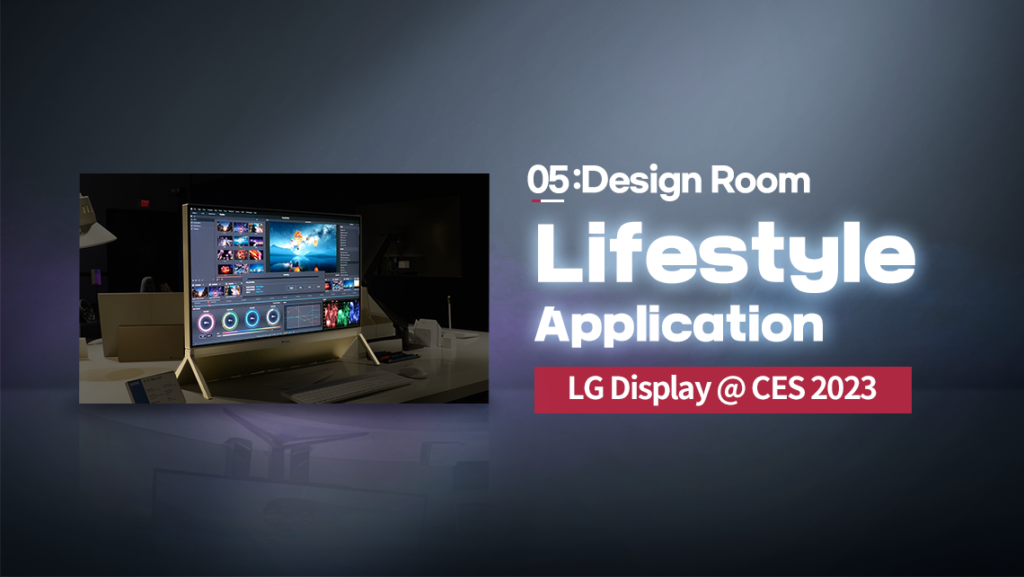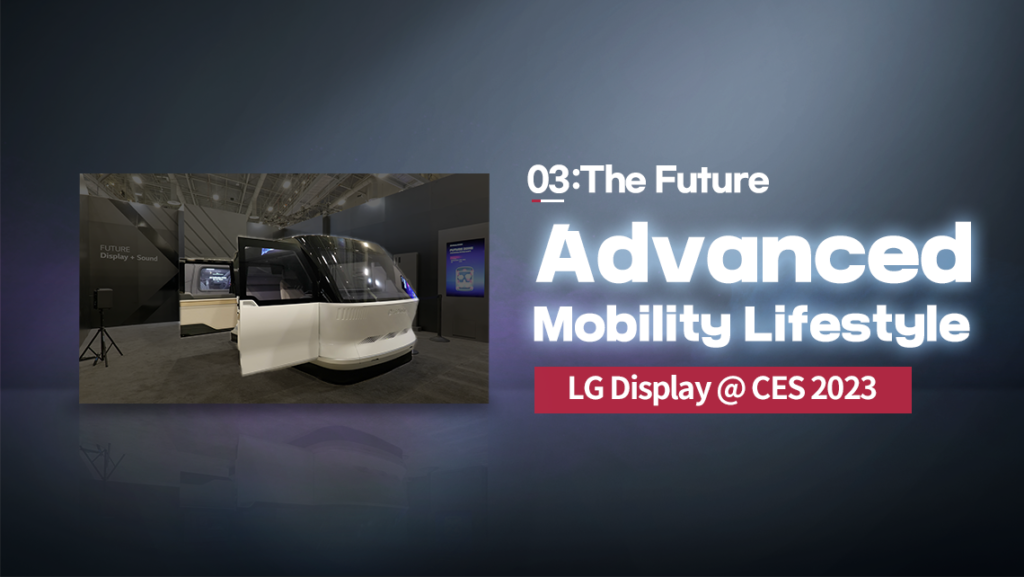META Technology 2.0, the latest technology from LG Display, has garnered global attention by pushing the boundaries of OLED brightness to 3,000 nits. In this edition of Beyond TV, we will delve into one of the key elements of META Technology 2.0 in Micro Lens Array Plus (MLA+) with Jo Jang-hyun, member of the Large Display Picture Quality Development Task.
In order to realize a peak brightness of 3,000 nits, LG Display’s latest OLED TV panels featuring META Technology 2.0 required a combination of hardware and software innovation. On the hardware side, this innovation came in the form of ‘MLA+’ (Micro Lens Array Plus), while the software was enhanced thanks to ‘META Multi Booster’ and ‘Detail Enhancer’ features. Today, we’ll explore hardware upgrades for META Technology 2.0 with an introduction to the new MLA+.
MLA+: The result of a decade-long OLED expertise with big data

MLA, the fundamental technology behind MLA+, maximizes light emission through a layer of micrometer-sized convex lenses, which dramatically increases overall peak brightness. The scale of these practically lenses is astronomically small, as one tiny pixel requires 5,117 lenses – This means that for a 77-inch 4K OLED panel, which is approximately comprised of 8.3 million pixels, a staggering 42.4 billion micro lenses would have to be distributed uniformly across the screen without any margin of error. This level of complex technology would have been impossible without LG Display’s decade-long OLED expertise.

In order to see MLA+ in action, we must zoom in on a panel with a digital microscope to see the countless tiny convex lenses. MLA+ utilizes big data accumulated from MLA to analyze light efficiency in 3D and find the most optimal lens angle. By adjusting the angle of the convex lenses, we were able to further maximize the emission of light in just one year after the development of MLA.
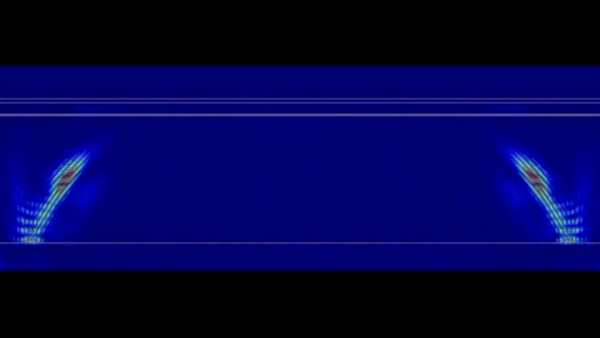
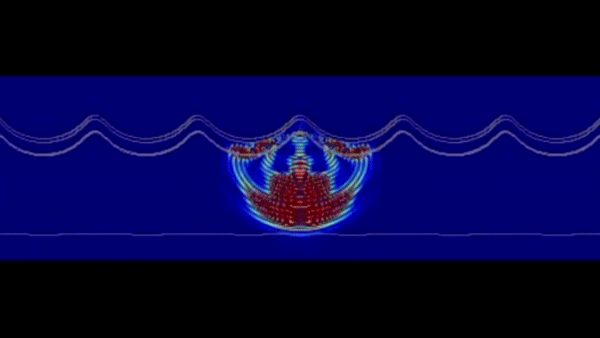
The reason why MLA+ technology is important is because it can increase light emissions by salvaging light that would otherwise be lost due to ‘total reflection.’ In OLED structures, light is reflected through the top and bottom electrodes before being emitted outside the panel. During this process, if the emitting light’s angle of incidence exceeds its threshold angle, light is entirely reflected at the boundary surface and lost.
Therefore, it was critical that we find the most optimal threshold angle that prevents loss of light from being reflected from the convex lenses in order to further enhance brightness.
Innovative customer experiences created by MLA+

Since OLED panels featuring MLA+ can emit even the smallest amounts of light, the results are not only a brighter screen but also improved energy efficiency, on top of wider viewing angles. With its increased brightness, MLA+ allows for a greater expression of contrast when depicting images – For example, in scenes depicting a dark night sky, each star can be shown in detail to vividly highlight the contrast between the shining star and the bleak sky, allowing viewers to experience a three-dimensional effect just like in real life.

As MLA+ enables the OLED panel to emit more light than conventional OLEDs using the same amount of energy, it naturally plays a critical role in reducing power consumption. In addition, by distributing the light obtained through billions of micro lenses, it offers a wider viewing angle of 160 degrees. Mimicking the principle of a dragonfly’s eye, which can see 360 degrees through millions of convex lenses, MLA+ allows for precise and detailed image reproduction without distortion from any angle.
MLA+, a brighter and wider light technology

By incorporating MLA+ into its OLED TV panels, already renowned for their large size, high resolution, and peak brightness, LG Display has come one step closer to realizing its goal of Natural Reality, which aims to achieve a display quality equivalent to what the human eye perceives in real life.
We at LG Display will pursue creating new and immersive customer experiences, so stay tuned for what’s next!



